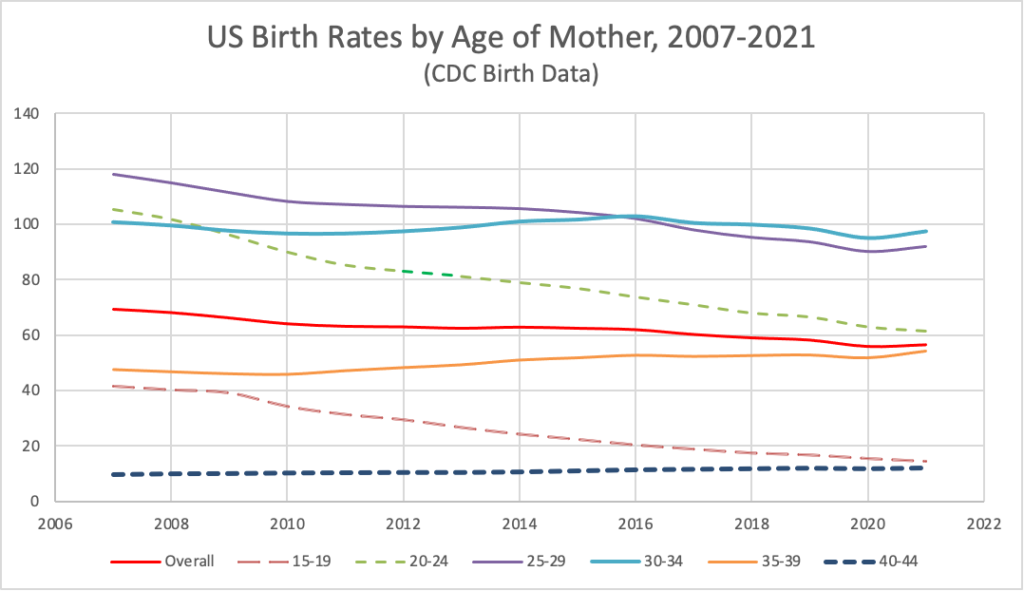In 2021, per the CDC, the US birth rate rose nationally by 1%— from 56 births / 1,000 fertile women (those 15 to 44 years old) to 56.6 births, regaining some of the 4% loss in 2020.

2020. Among 2020 births only those in December (babies conceived in March) would be directly affected by Covid-19. That would have been a pretty big quarantine effect if the decline were all due to Covid (though certainly a rise in abortions and/or miscarriages due to Covid-19 could also have played in). Instead, the 2020 decline seems to be largely an ongoing effect of the decline underway since 2007 (-19.2% 2007-2020).
2021. The recently released 2021 data reveals that the 13-year fairly steady decline in births (this was the first rise since 2014) was curtailed in the remainder of 2020 and the first part of 2021, though we can’t yet tell how that maps onto the pandemic (it would be nice to see the data broken out by month). But the 2021 rise was small, especially relative to the 4% decline the year prior.
Notably most of the 2021 rise in births was to women 25 and over. Births to teens continued to decline in 2021, falling by 6% in 2021, for a total fall since the start of the recession in 2007 of 65.4%. Much of that fall is due to the use of LARCs (Long-Acting Reversible Contraceptives), and it seems not to have been affected by the Covid rise (the decline among teens may even have been furthered by the quarantine). Likewise women 20-24 continued to see a decline in births – by 2% in 2021, for a total fall since 2007 of 41.7%.

This suggests we may be beginning to see some the “ripple effect of delay” predicted here in prior years, whereby young women who chose not to start families in their teens begin to have them later. Births to women 25-29 rose 2%, to women 30-34 rose 3%, to women 35-39 rose 5%, and among women 40 and over, 3%.
But since the Provisional Birth Data Report published last week doesn’t break out births by birth order, we’ll have to wait for the Final 2021 birth data (likely in November, at the earliest) to get a real sense — since only then will we see that data and be able to tell if 2021’s 1% rise mostly involved older women having their first birth or a later child. Or if the rise occurred across both groups.

